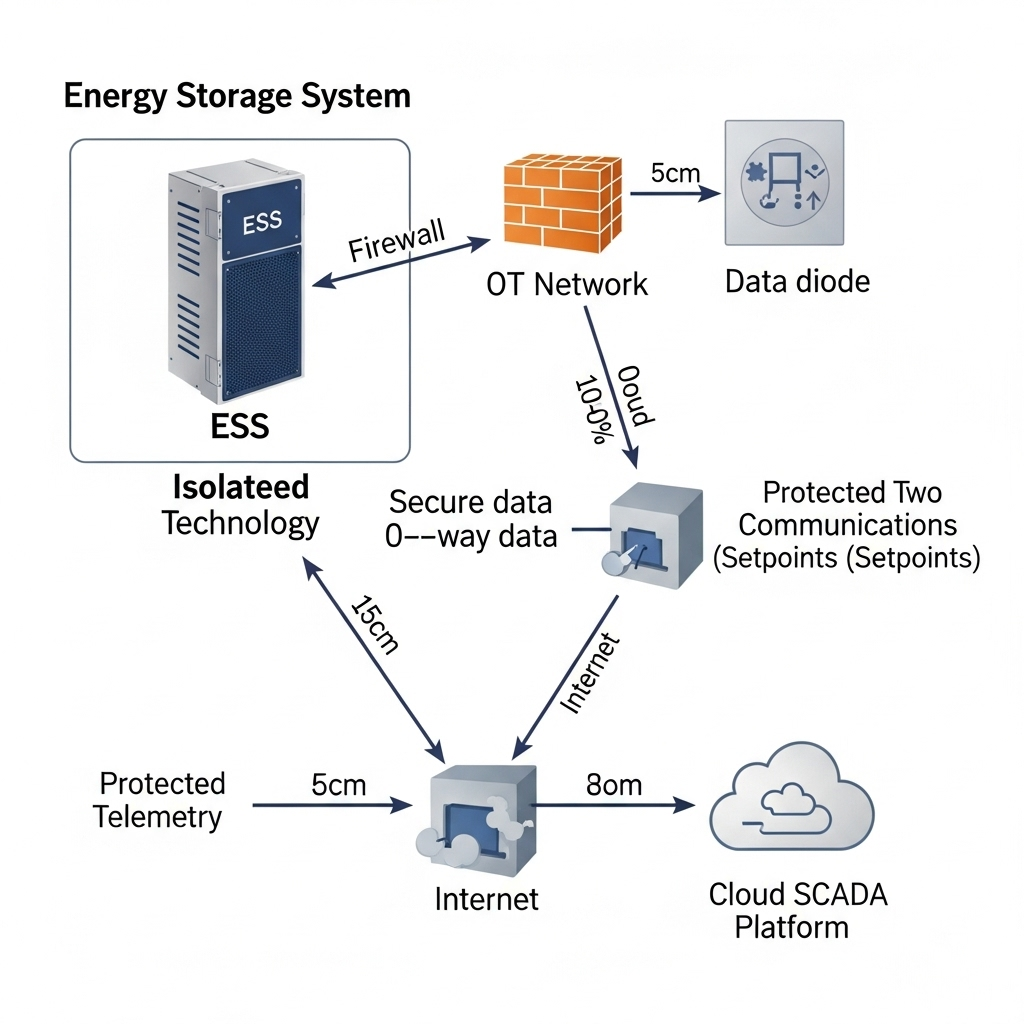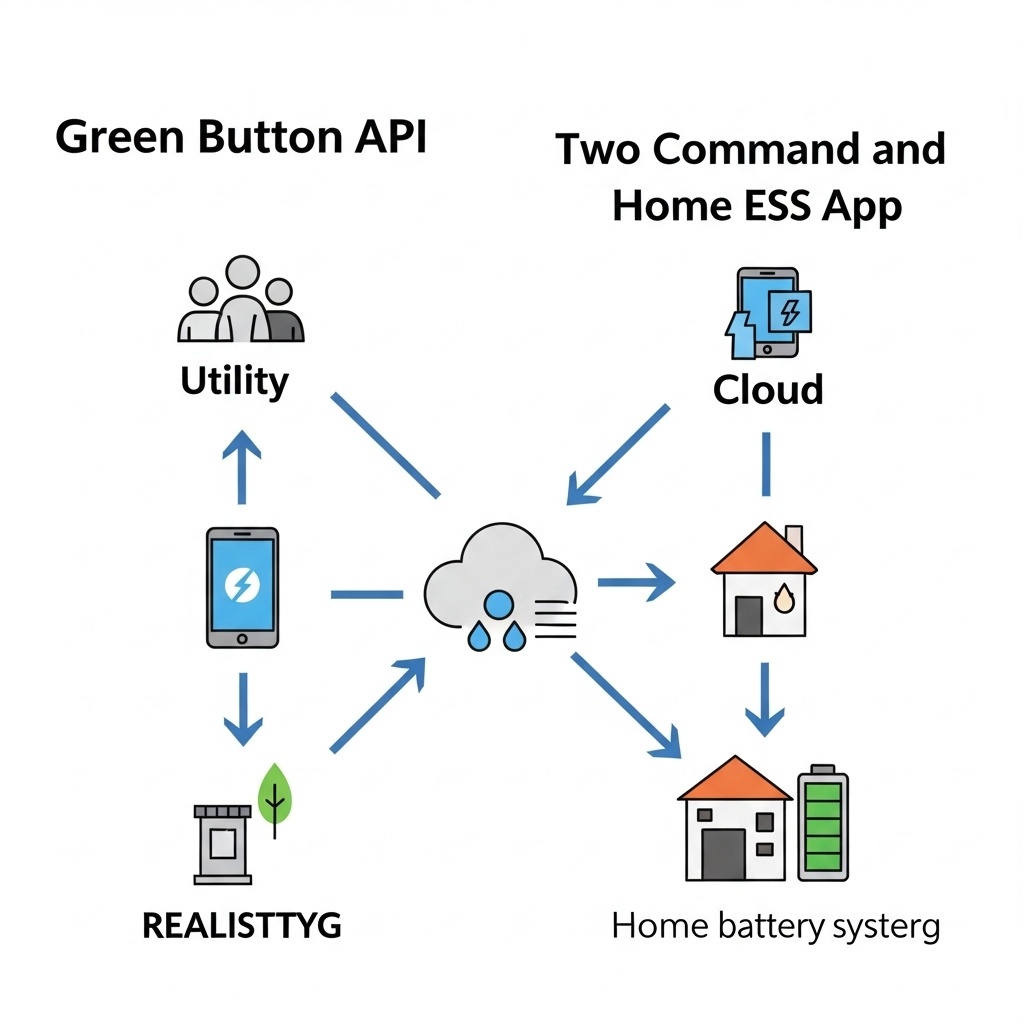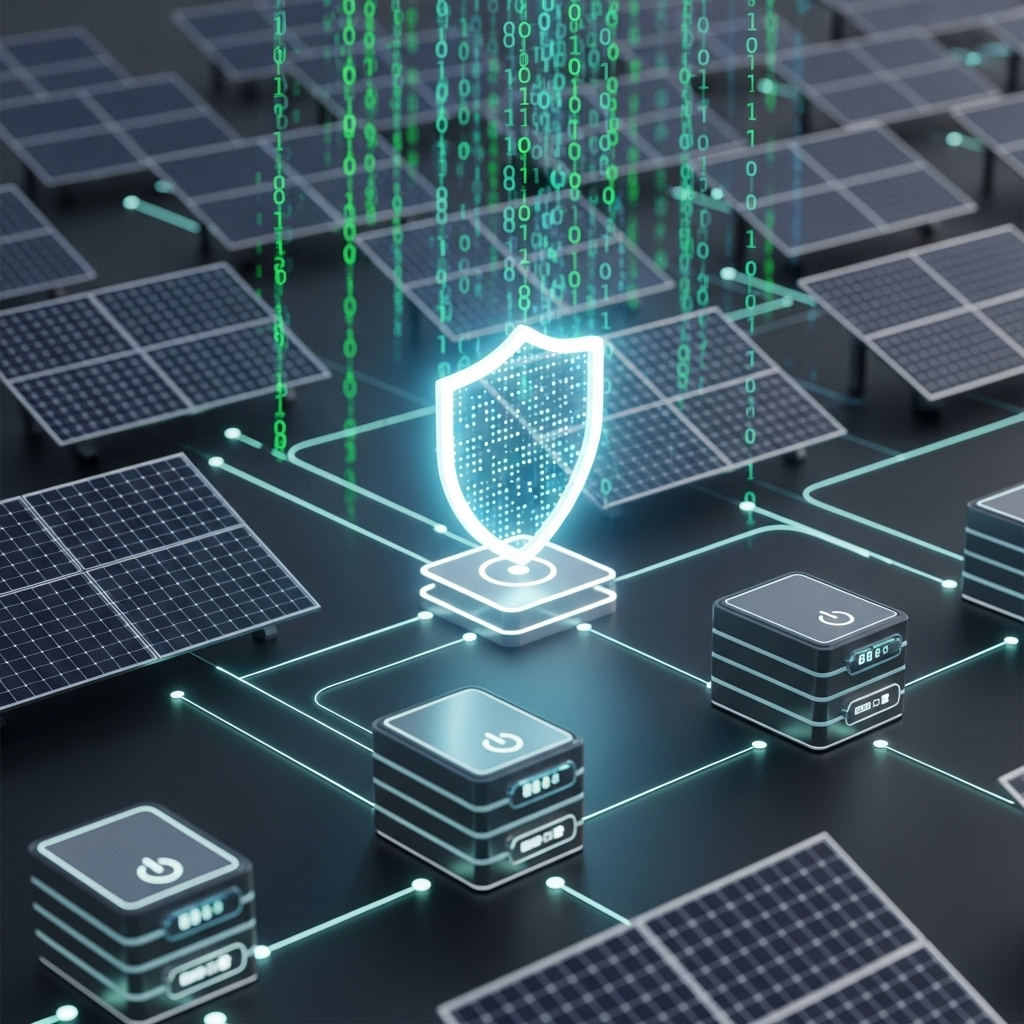Connecting an Energy Storage System (ESS) to a cloud-based Supervisory Control and Data Acquisition (SCADA) platform unlocks powerful capabilities. It allows for remote monitoring, advanced analytics, and optimized performance. Yet, for a Chief Information Security Officer (CISO), this connectivity introduces a new attack surface. The conversation shifts from operational efficiency to cybersecurity resilience. Before giving the green light, a CISO will probe deep into the security architecture. Here are the fundamental questions they will ask.
Data Integrity and Confidentiality
The primary concern for any CISO is the data itself. If the data flowing from the ESS to the cloud can be intercepted, altered, or stolen, the entire system is compromised. Control decisions based on faulty data can lead to equipment damage, financial loss, or grid instability.
How is Data Secured in Transit?
Data moving between the ESS site and the cloud is highly vulnerable. A CISO will demand to know the specific protocols used to protect this data stream. Is communication encrypted using current standards like Transport Layer Security (TLS) 1.2 or 1.3? Who manages the cryptographic keys, and how are they rotated? Weak or outdated encryption is an open invitation for a man-in-the-middle attack, where an adversary can read and manipulate operational commands and telemetry data.
How is Data Protected at Rest?
Once the data arrives in the cloud, its security journey is not over. CISOs will scrutinize the security posture of the cloud environment. Is the data encrypted at rest? What access controls are in place within the cloud database? According to a report from the International Energy Agency (IEA) on Energy and AI, the energy sector's increasing digitalization makes it a prime target for cyber threats, highlighting the risks of unsecured data repositories. A CISO needs assurance that sensitive operational data is segregated and protected from unauthorized access, even by the cloud provider's employees.
How is Data Authenticity Verified?
A CISO needs to be certain that the data received by the Cloud SCADA system originates from the legitimate ESS and has not been spoofed or tampered with. This requires strong device identity and authentication mechanisms. Each ESS unit should have a unique, non-repudiable identity. Questions will revolve around the use of digital certificates or other cryptographic methods to sign data at the source, ensuring both authenticity and integrity. Understanding these metrics is foundational, as poor data integrity can mask serious operational issues. As detailed in the ultimate reference for solar storage performance, key metrics like round-trip efficiency and state of charge are not just operational data; they are critical assets that must be protected from manipulation.
Access Control and Authentication
Controlling who can access and manage the ESS via the cloud is another top-tier concern. Stolen credentials are one of the most common attack vectors, and a robust access control strategy is the primary defense.
Who Has Access and Why?
The principle of least privilege is non-negotiable. A CISO will ask for a detailed breakdown of the Role-Based Access Control (RBAC) policies. Who has administrative rights? Who can only view data? Who can issue control commands? Every permission should be justified. Over-privileged accounts, whether for internal operators or third-party vendors, create unnecessary risk. The goal is to ensure that a compromised user account cannot cause catastrophic damage.
Is Multi-Factor Authentication (MFA) Enforced?
A simple username and password are no longer sufficient for securing critical infrastructure. A CISO will insist on MFA for all users accessing the Cloud SCADA platform. MFA adds a crucial layer of security by requiring a second form of verification, such as a code from a mobile app or a physical security key. This measure dramatically reduces the risk of unauthorized access resulting from phishing attacks or credential theft.
Are All Actions Audited and Logged?
In the event of a security incident, a clear and immutable audit trail is essential for forensic analysis and response. CISOs will verify that the system logs all access attempts, configuration changes, and control commands. These logs should be comprehensive, timestamped, and protected from tampering. Without detailed logs, it is nearly impossible to understand the scope of a breach or prevent it from happening again.
Network Architecture and Security
How the ESS is physically and logically connected to the network is a critical piece of the security puzzle. A flat, open network is a CISO's nightmare.
Is the Operational Network Segmented?
The operational technology (OT) network where the ESS resides should be strictly isolated from the corporate information technology (IT) network. This practice, known as network segmentation, prevents an attacker who compromises an IT system (e.g., through a phishing email) from moving laterally to disrupt physical operations. The CISO will want to see a network diagram that clearly shows this separation and the controlled conduits between the two environments.
What Defends the Network Perimeter?
The connection point between the OT network and the external world needs to be fortified. CISOs will evaluate the use of firewalls, which filter traffic based on a set of rules. However, for critical infrastructure, they may push for stronger measures. As noted in the System Integration of Renewables report, the need for system operators to have real-time data via SCADA is growing. To secure this flow, CISOs may ask about data diodes. These are hardware devices that enforce a one-way data flow, allowing telemetry data to exit the secure zone without allowing any inbound traffic, effectively eliminating remote attack vectors against the ESS itself.
| Security Measure | Data Flow | Primary Function | Typical Use Case | Security Level |
|---|---|---|---|---|
| Firewall | Bidirectional | Filters traffic based on software rules (IP, port) | General network perimeter defense | Good |
| VPN (Virtual Private Network) | Bidirectional | Creates an encrypted tunnel over a public network | Secure remote access for operators | Very Good |
| Data Diode | Unidirectional | Hardware-enforced one-way data transfer | Sending telemetry from a high-security zone | Excellent |
Incident Response and Compliance
Even with the best defenses, organizations must prepare for the possibility of a security breach. A CISO's job includes ensuring the company is ready to respond and that all solutions comply with industry regulations.
What is the Coordinated Incident Response Plan?
A cyberattack on an ESS requires a swift, coordinated response. A CISO will ask: 'What is the plan?' This plan must define roles and responsibilities for the CISO's team, the operations team, and the ESS/SCADA vendor. It should cover detection, containment, eradication, and recovery. Drills and tabletop exercises are often required to validate the plan's effectiveness before a real incident occurs.
How Does This Solution Ensure Compliance?
The energy sector is governed by a web of cybersecurity regulations, such as NERC CIP in North America or ENISA guidelines in Europe. CISOs are ultimately responsible for compliance. They will require documentation proving that the proposed ESS-to-cloud architecture meets all relevant legal and regulatory requirements. As the IRENA Grid Codes for Renewable Powered Systems report explains, grid codes often mandate specific protection co-ordination, and a secure, compliant SCADA connection is integral to meeting these obligations.
Final Thoughts on a Secure Connection
Connecting an ESS to a Cloud SCADA system is a powerful move, but it must be executed with a security-first approach. For a CISO, the process is a rigorous risk assessment. By asking these critical questions about data protection, access control, network design, and incident response, they ensure that the pursuit of operational efficiency does not come at the cost of security. A truly resilient energy system is one that is not only efficient and reliable but also secure by design.
Disclaimer: This information is for educational purposes only and does not constitute legal or financial advice. You should consult with a qualified professional for advice tailored to your specific situation.
Frequently Asked Questions
What is Cloud SCADA and why is it used for ESS?
Cloud SCADA is a version of a Supervisory Control and Data Acquisition system that is hosted in the cloud rather than on local servers. It is used for Energy Storage Systems (ESS) to enable remote monitoring, management, and data analytics from anywhere, offering greater flexibility and scalability compared to traditional on-premise systems.
Is a direct internet connection for an ESS ever safe?
A direct, unprotected internet connection for an ESS is highly discouraged and considered unsafe. Any connection should be protected by multiple layers of security, including firewalls, VPNs, strong authentication, and network segmentation, to minimize the risk of a cyberattack.
How does inverter cybersecurity impact the overall security of the ESS-to-cloud connection?
The inverter is a critical component of an ESS, acting as the brain of the system. If the inverter's firmware or communication channels are compromised, an attacker could manipulate the entire ESS. Therefore, strong inverter cybersecurity, including secure firmware updates and protected communication protocols, is fundamental to the security of the entire ESS-to-cloud architecture.
What is the first step a CISO should take when evaluating a new ESS cloud connection?
The first step is to conduct a thorough risk assessment and threat model. This involves identifying all potential assets (data, control functions), threats (malicious actors, system failures), and vulnerabilities in the proposed architecture. This assessment forms the basis for all subsequent security questions and requirements.





Leave a comment
All comments are moderated before being published.
This site is protected by hCaptcha and the hCaptcha Privacy Policy and Terms of Service apply.